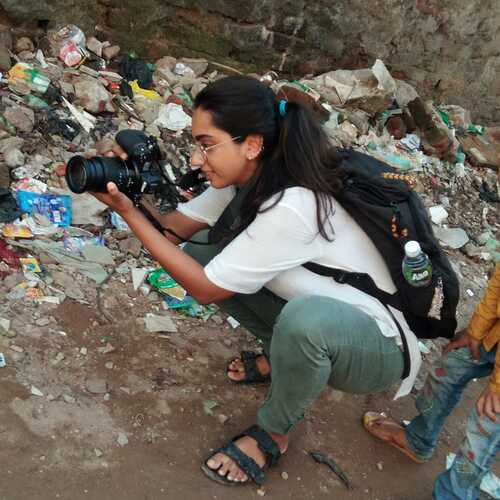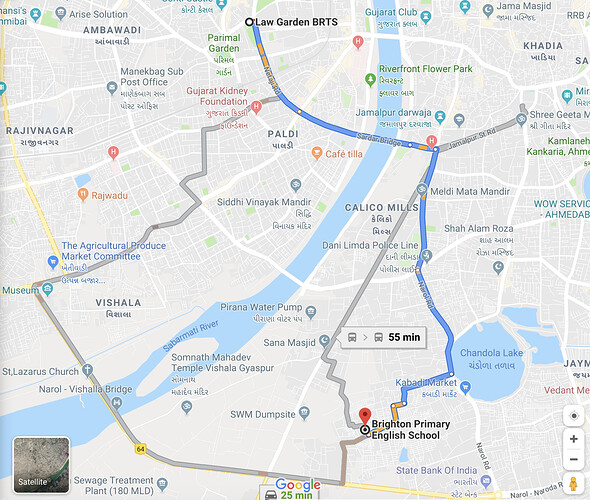Sharing my reflections and impressions from a few hours spent at the CUBE lab in Mumbai on Thursday afternoon. Please click on the links for visuals.
There’s a lot you can tell about how people learn just by looking at the physical set up of a space. There was a clear reversal of roles, with children (from a school in Cheetah Camp) presenting their work on the board and the mentor (Jai Kishan) was seated and asking probing questions to better understand their thinking. In the CUBE lab, clutter in the physical space is ok as long as thinking is logical and systematic. That is not to say that the space is messy but simply that collaboration is not always a ‘tidy’ process. People coming to use the lab are expected to take ownership of the space and put materials back in their proper place. One college student (Uday from S. J. Somaiya college) was actually tending to the snails and keeping their home clean, even though I think he is working with another model organism called Moina.
“If a cluttered desk is a sign of a cluttered mind, of what, then, is an empty desk a sign?” - quote attributed to the scientific mind of Albert Einstein
Schools follow a bureaucratic system of education which views subjects in isolation to each other, with rigid epistemic demarcations. Formal education demarcates a ‘box’ that contains some of what it sees as crucial to the future success of all children. Hence, everyone needs to get inside the box even though there is a world of knowledge and skills that exist outside of its boundaries. Life in the box is very crowded and it’s hard to see the uniqueness of each individual. Within this box students are categorized arbitrarily, by their age or performance on academic assessments. I love that there are learners of all ages using this space. It provides a wonderful opportunity for social interaction and cross-pollination of ideas.
This sentiment is captured beautifully in the motto “Weak , Meek and Geek all are Welcome!”
During causerie, children and adults alike are pushed to articulate what they are actually doing, rather than what they think will happen. There is an emphasis on describing and drawing in order to explain their methodology and experimental design. Importance is placed on documentation and making records, which is evident in the careful labelling of all samples. My big take away is that simply observing some phenomena is insufficient. We need to make it visible to others in order to have a convincing argument. As an ‘observer’, I was not spared from participating and was invited to ask lots of questions. Being a chronic over-thinker, I left feeling motivated to get my project started, make mistakes and figure it out along the way.
“How are you sure? How do you know?” - Frequently Asked Questions overhead in the CUBE lab
In a previous meeting with Professor Nagarjuna, I asked him what conditions enable collaborative learning environments. Here are a few things he shared from his experience:
- There should be ample opportunities to make mistakes, analyse and learn from them. Fear is a disabler of collaboration and creativity.
- Encourage variety in groups, which is an opportunity to learning from each other. Watch out for leaders who are bossy and dominate conversations.
- Entry should be easy. Don’t start with complicated things but rather work on something that is immediate and achievable. Create opportunities to reward good thinking and work.
- Encourage people to speak their local language and express themselves however they are comfortable.
- Focus on the process and not the product. Documentation is essential to create a record and ensure knowledge generated in conversations is not lost.
What resonates with me most about the CUBE program is that people collaborate on the basis of ideas and their implementation, rather than selection due to credentials. There are many messages I need to tease out from my own schooling where I was constantly reinforced to believe that I’m not a ‘science or math person’. My thesis is a small step towards that. I’ll be working with kids who live on a garbage dumping site, on some of the sidelined scientific habits like cartography, inquiry and communication. Looking forward to sharing some of our work on this platform and getting support and feedback from critical friends in this community. Please ask lots of questions and leave your suggestions on our posts. Thank you for this opportunity and for reading.
More pictures can be found in this folder.

